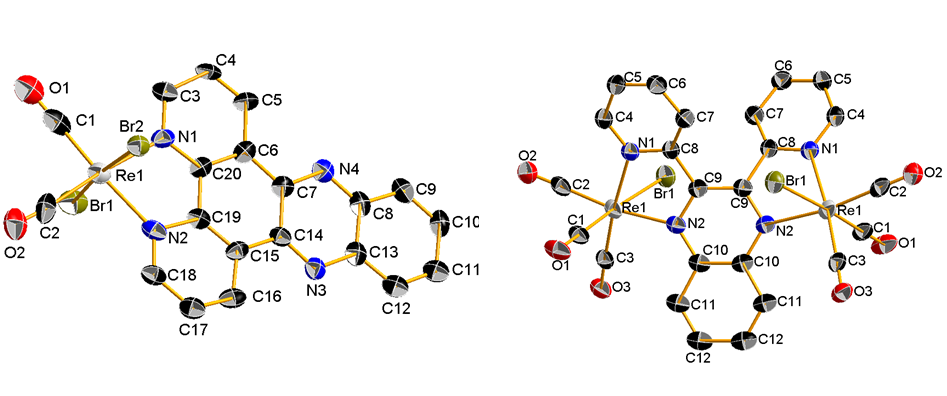Structural Cytotoxicity studies of {Mn(CO)3Br}+, {Mn(CO)3Br}+ and {Mn(CO)3Br}+ bearing bipyrimidine derivatives or isocyanides as ligands
Carbon monoxide (CO) is known as fundamental gaseous neurotransmitter in humans and there is a growing interest in its pharmacological or medical applications. CO is acknowledged to be involved in several cellular, physiological and pathological pathways, such as endothelial injuries, vasodilatation, inflammation. Organometallic carbonyl complexes are best suited to play the role of CO carriers. Targeting of the molecules to local injuries can thus be achieved by modifying the coordination sphere of the metal ion via a proper selection of ligands or by appending CO releasing molecules (CORMs) to biomolecules.

There exist, however, a delicate balance between cytoprotective and cytotoxic effects of CO releasing molecules. Various studies have reported promising cytoprotective effects of Mn- and Re-based CORMs in different preclinical models, while other studies have focused on the toxicity of the same molecules on cancer cells or their bactericidal activity. Nevertheless, there is no structure-activity known for CORMs, nor is it understood how the metallic center, its oxidation state and ligand framework impact on the relative cytoprotective and cytotoxic of CORMs.
In order to attempt a predictive correlation between the cytotoxicity and the structure of CORMs, we report the effects on mouse cancer cells of 18 different complexes. Three metallic carbonyl cores, Mn(I), Re(I) bis-CO, Re(I) tris-CO, with two series of three similar ligands (isocyanide and bipyrimidine-type) were tested. Seven crystal structures were determined by X-ray diffraction. The kinetics of the degradation of Mn(I) and Re(I) bis-CO complexes as their CO delivery capabilities were also investigated.